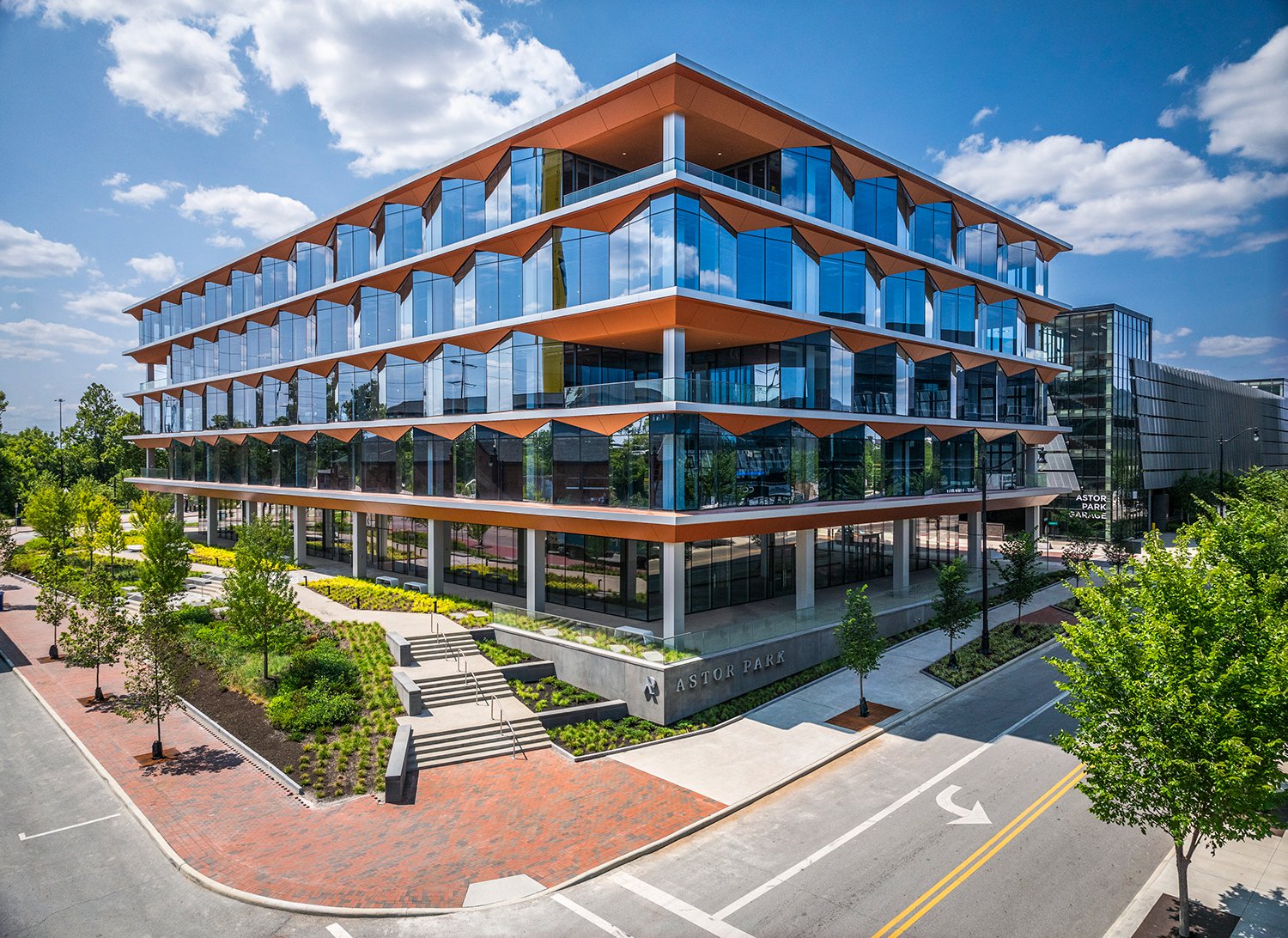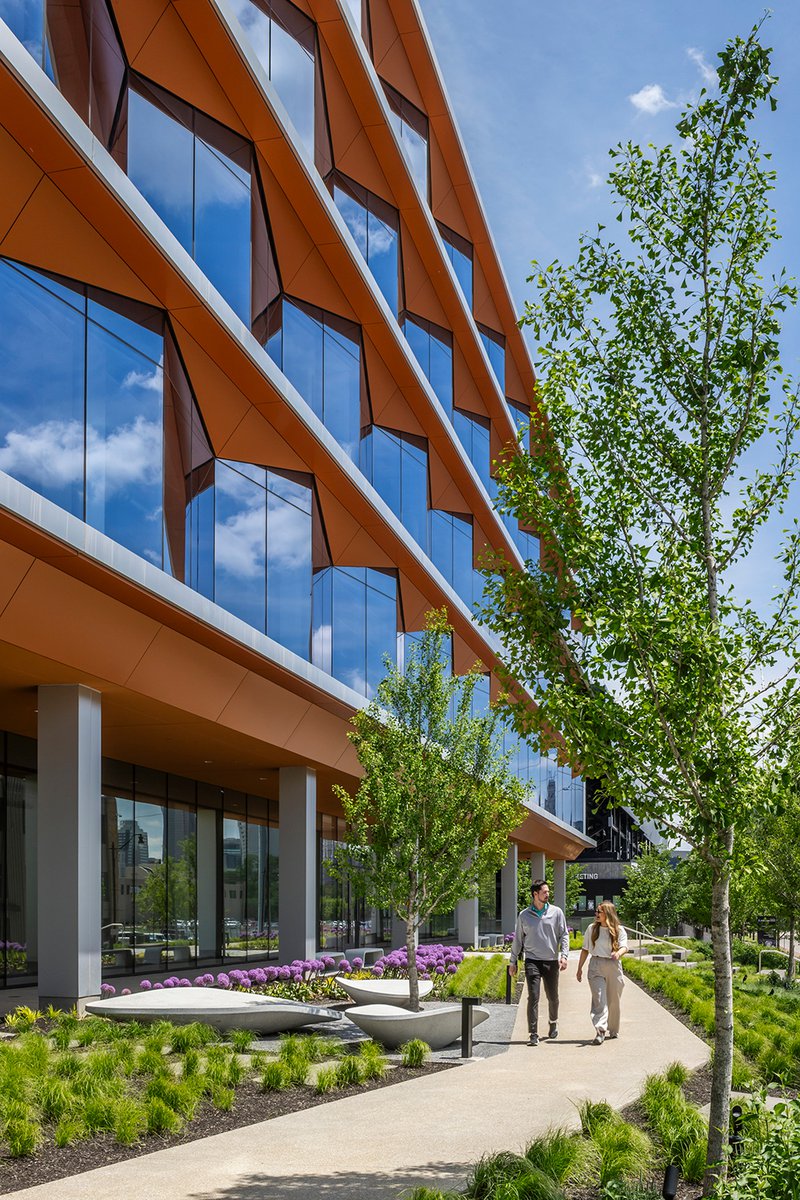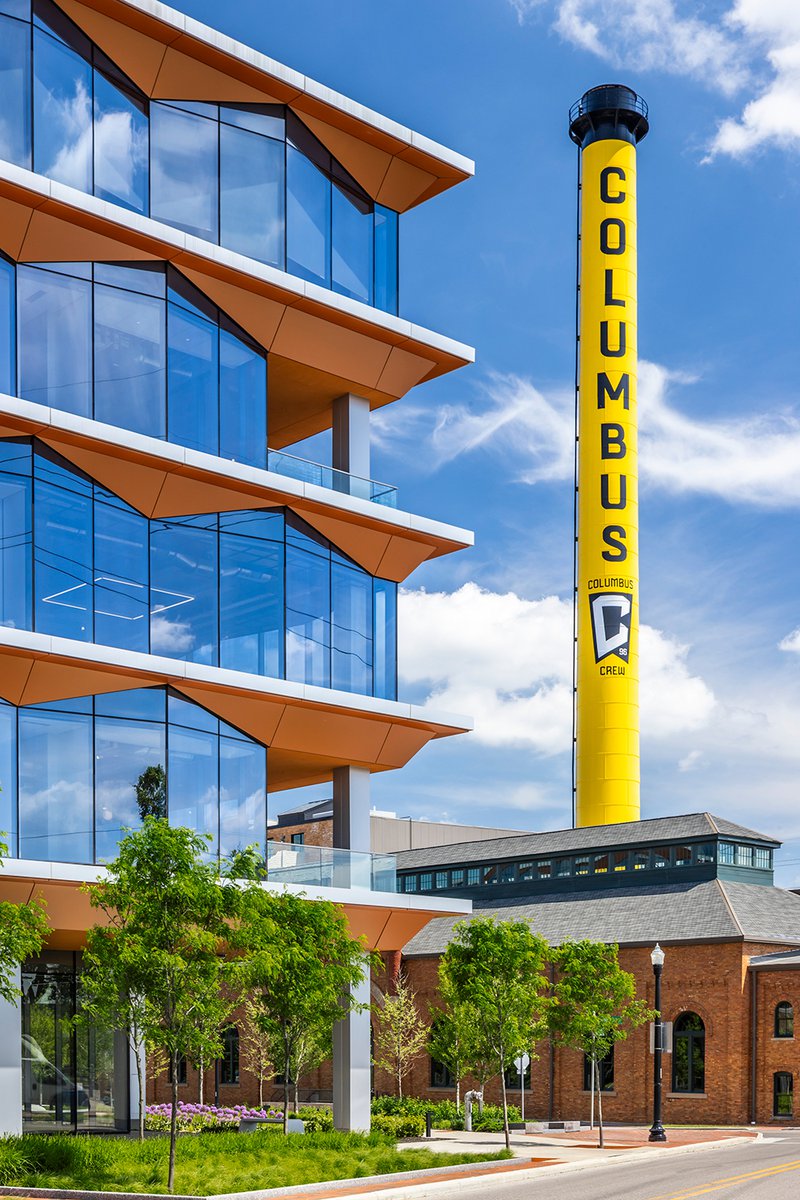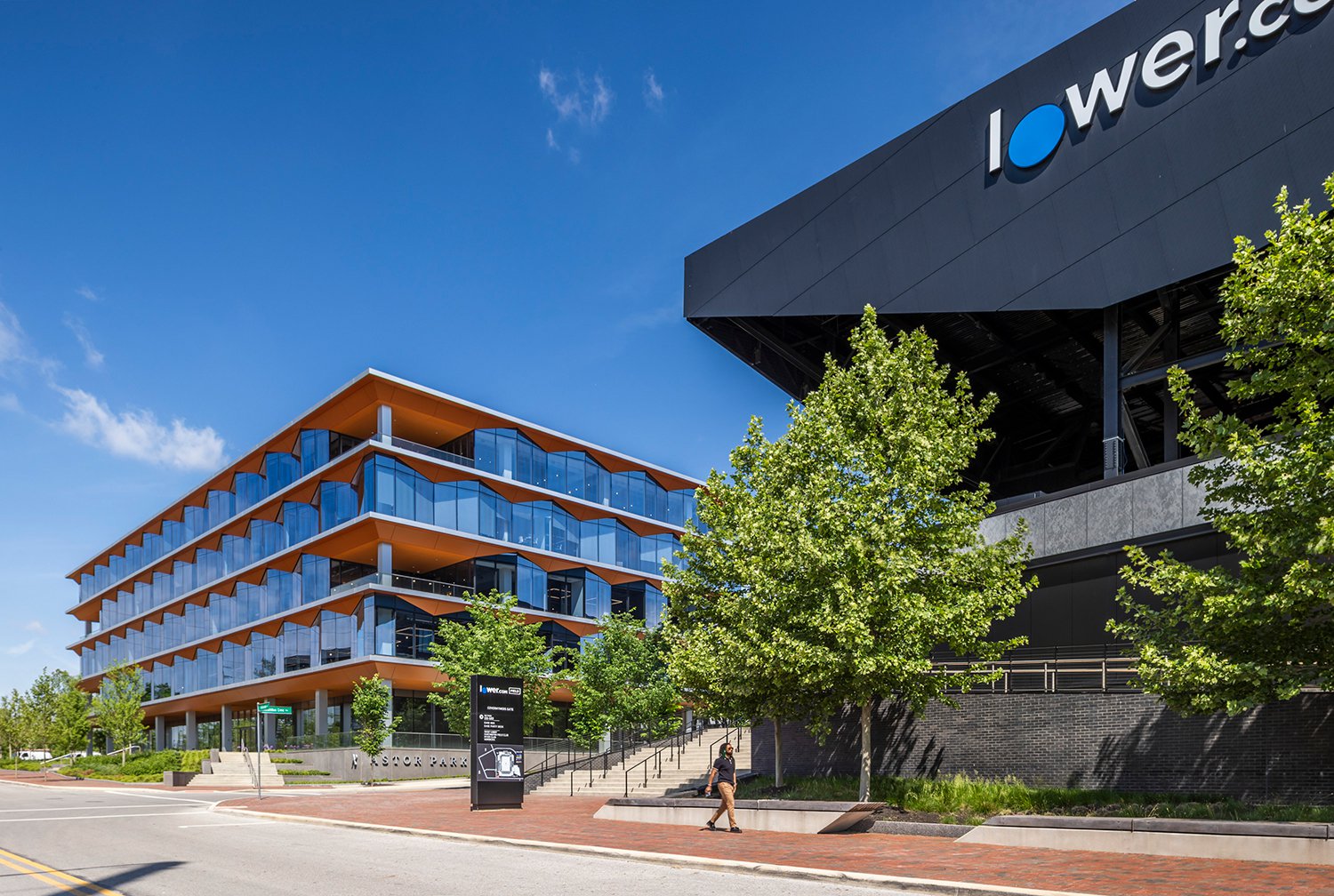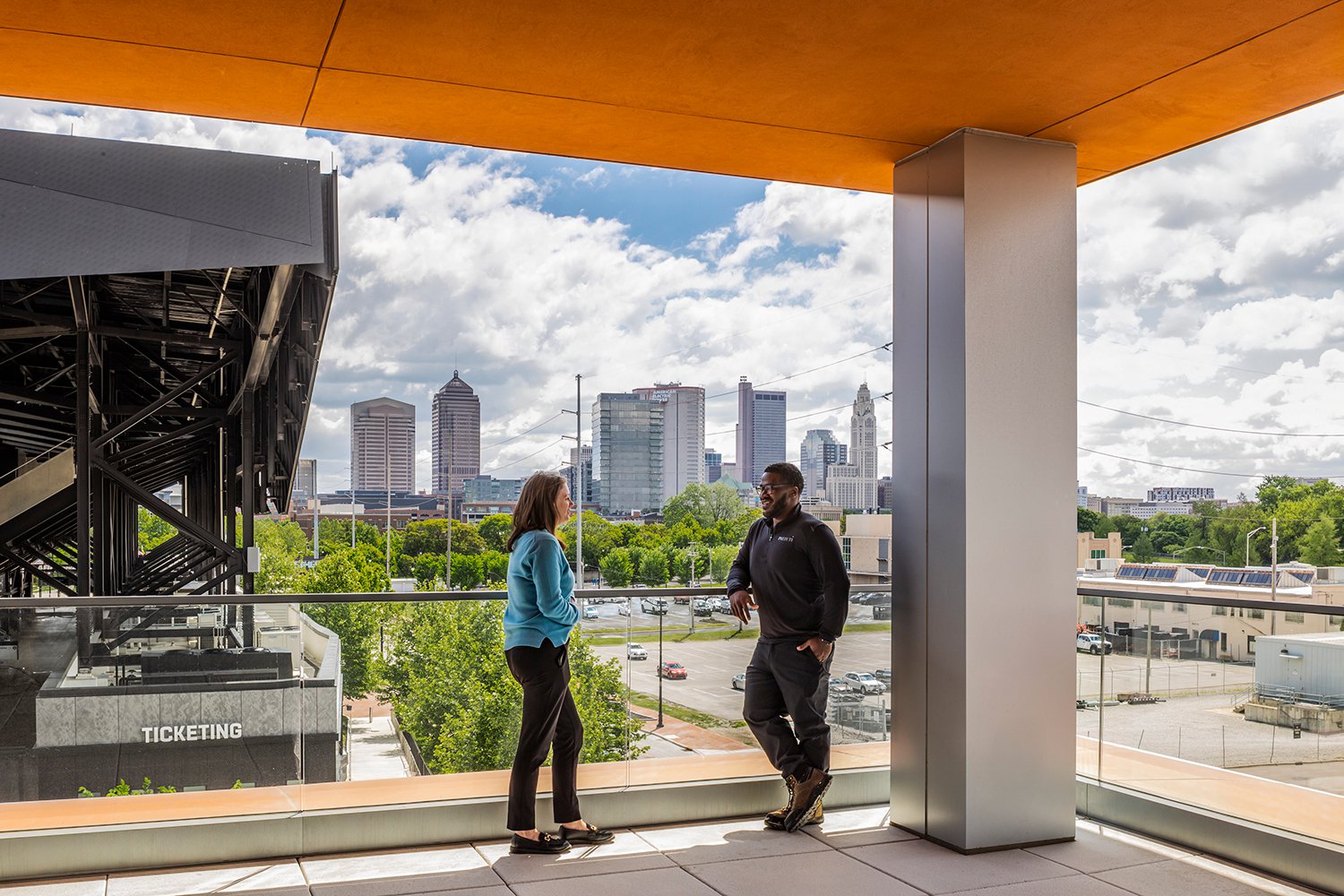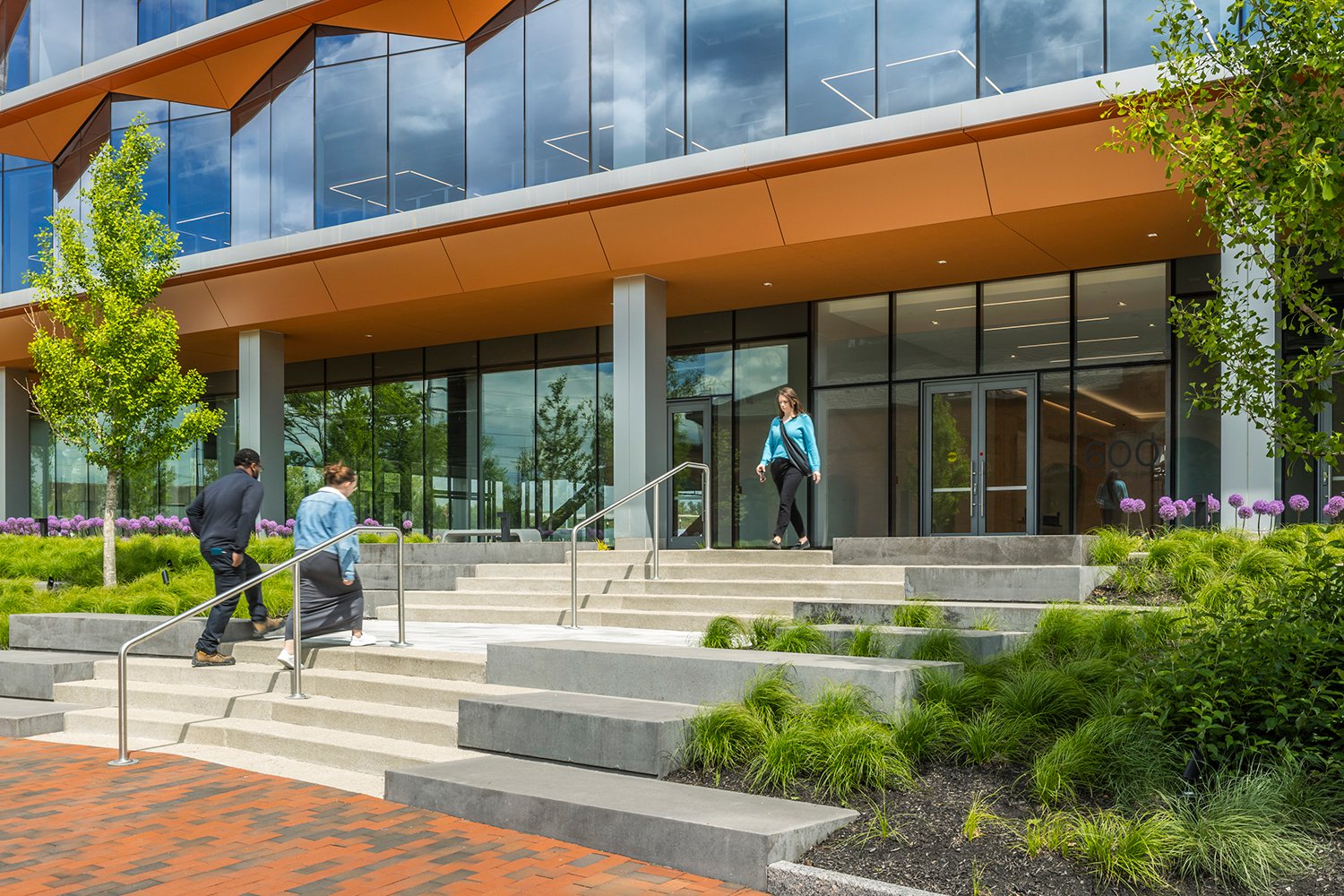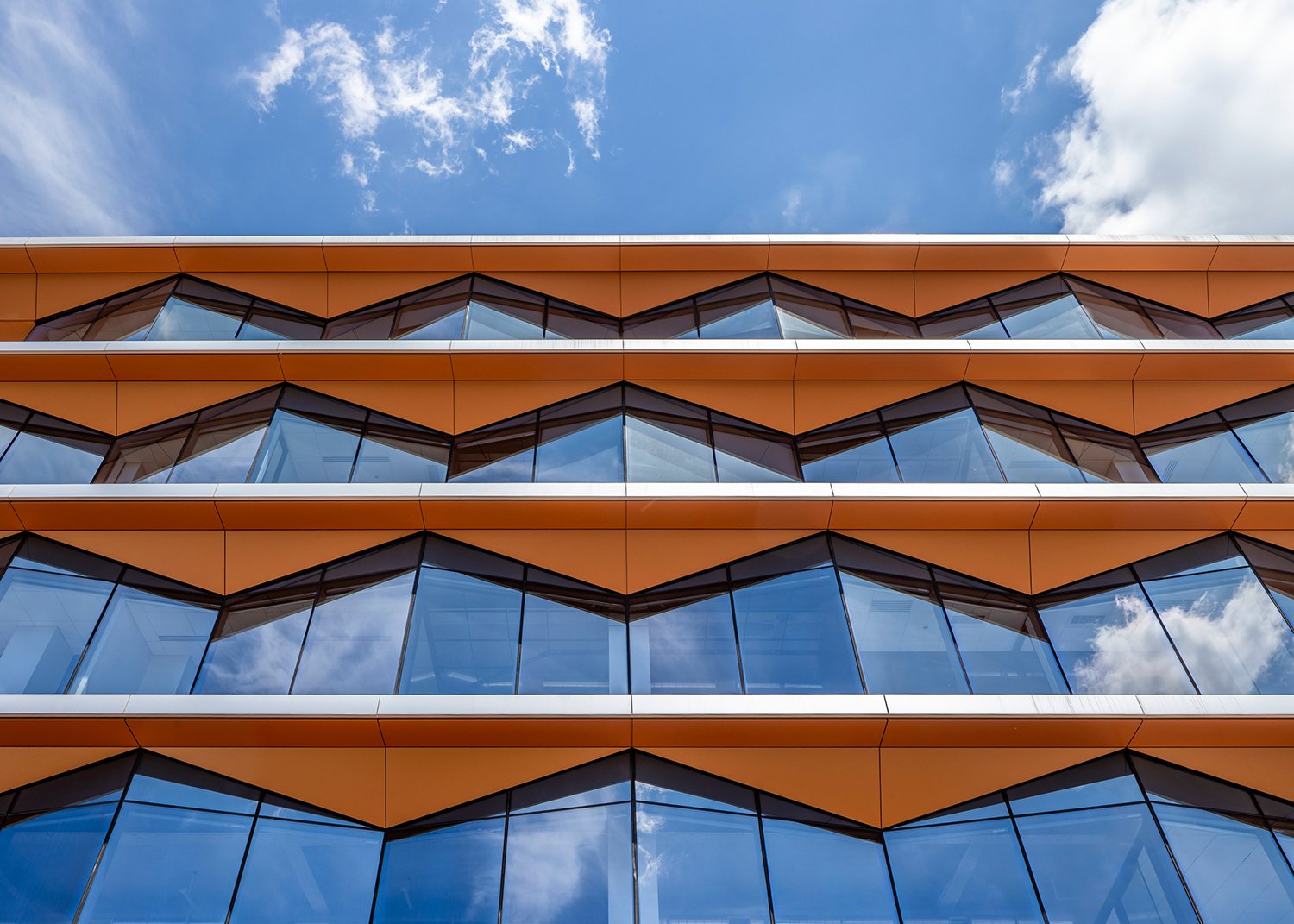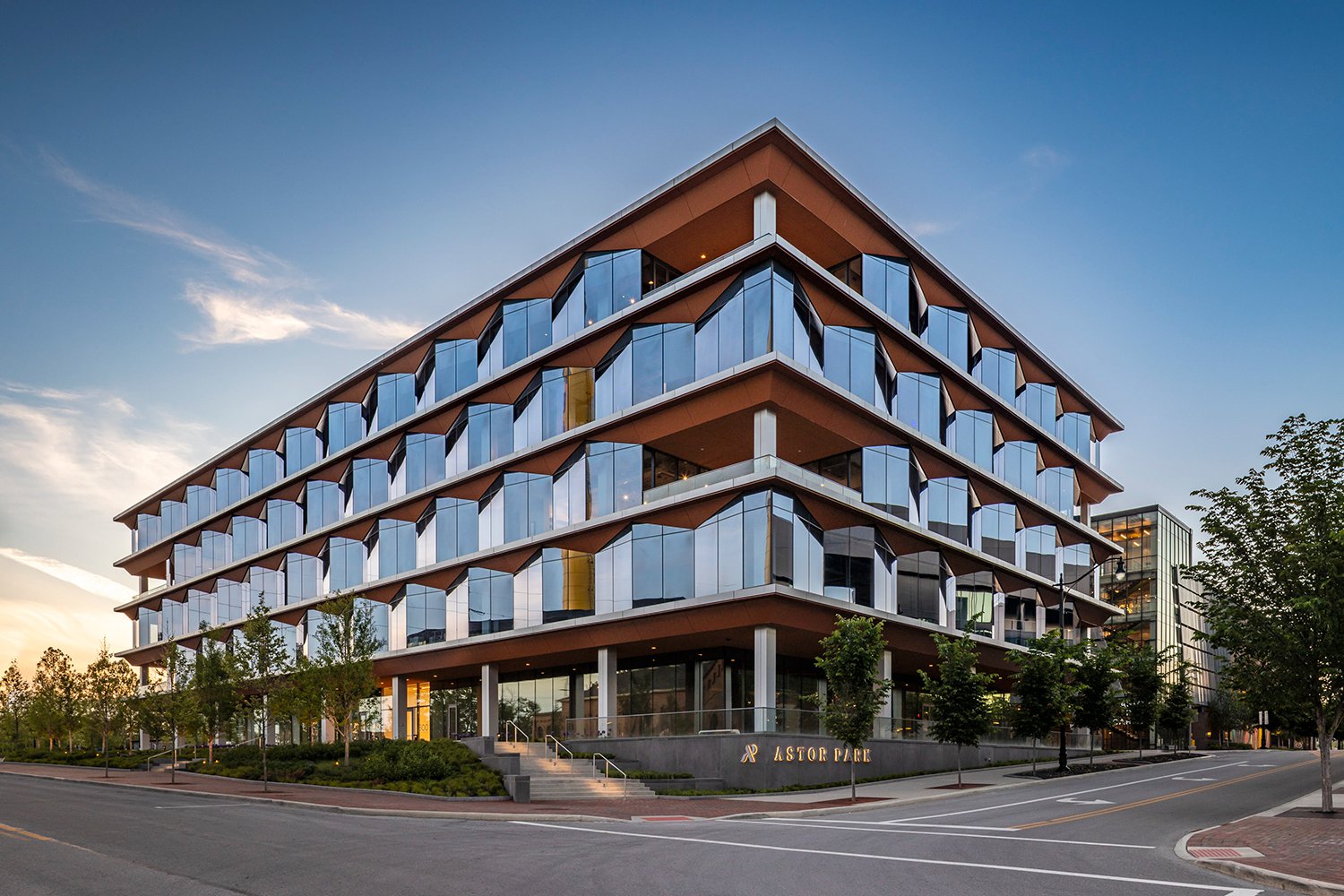Astor Park Office
Columbus, Ohio, USA
Located in Columbus’ growing Arena District, Astor Park Office anchors a three-phase master plan adjacent to Lower.com Field, home of the Columbus Crew. Its saw-toothed façade design echoes the ripples of the adjacent Olentangy River, capturing movement and light through a distinctive, water-inspired rhythm. Prioritizing visibility, efficiency and connection, the building features outdoor terraces, a midblock pass-through lobby and active ground-floor amenities that invite public engagement. Integrated with surrounding green space, riverwalks and bike networks, the project supports well-being and an inclusive urban lifestyle.
Extending this sense of openness and connection, the design strikes a balance between the need for an iconic presence and the efficiency and adaptability required in a mixed-use environment. Drawing from the energy of the surrounding entertainment district and the natural landscape, the building’s sculptural form establishes a strong identity that feels both contemporary and contextual. Bronzed sunshades add visual depth while reducing glare, and the raised base with an open lobby promotes transparency and accessibility. Outdoor spaces and active programming keep the building lively and welcoming beyond event times, achieving the client’s goal for a distinctive yet community-oriented workplace that remains functional during busy game days.
Astor Park Office’s originality lies in its integration of context, form and community. The façade’s fluid geometry and warm material palette reflect the local environment, while its public edges—terraces, riverwalk access and shared amenities—blur the boundaries between the workplace and the neighborhood. One-third of the site is dedicated to green space with restored habitats, bike paths and shared parking to support sustainable mobility. Future phases will add affordable and multi-generational housing, ensuring equitable access. Together, these elements position Astor Park Office as a connected, inclusive and enduring addition to Columbus’ urban fabric.
